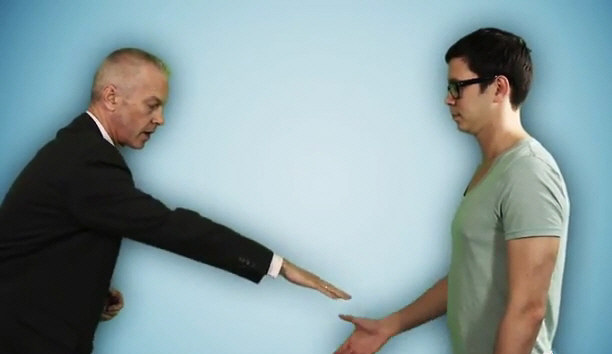
The term “thin slicing” refers to the tendency to judge others within moments of meeting them or seeing them walk onstage to speak. “Now I know we always want something to smile about, and a little bit of laughter helps with retention and learning.” “In the past I thought if I’m speaking about a serious topic, I’d better look serious,” she says. This finding helped free her as a speaker.

Whether or not a speaker had a funny or more serious topic, she says, “The more smiling, the higher the views.” The audience picks up on that as well.”Īnother nonverbal message also stood out as important: smiling. If you feel unnatural doing a hand gesture, don’t do it. Rather than scripting speeches with nonverbal signs and interpreting every point with their hands, Van Edwards’ advice to speakers is “watch a video of yourself speaking to see where you naturally add hand gestures. “While hand gestures are incredibly powerful for comprehension, charisma, and fluency, there is such a thing as too much of a good thing.” “The biggest mistake people can make is thinking about nonverbals like an interpretive dance,” she says. Van Edwards has observed many speakers using various nonverbal techniques in her Science of People laboratories. What is it about a speaker's gestures and posture that make audiences transition from being indifferent to engaged? If a speaker said they had three ideas, they held up three fingers.” If a TED speaker said they had a big idea, they held their hands out wide like carrying a heavy load. “Those were gestures that added meaning or depth to words.

:max_bytes(150000):strip_icc()/BodyLanguage-ArmsLegs-5984a3a503f4020010326809.png)
“The best speakers used congruent gestures,” she says. It wasn’t just the number of hand gestures that separated the best TED Talks from the others, Van Edwards found, but rather the type of gestures speakers selected and how they were used. But the top-rated TED Talks had an average of 7.3 million views and used an average of 465 hand gestures. “The biggest thing we noticed in the study was the correlation of the volume of hand gestures to high speaker ratings.” The lowest-rated TED Talks in her particular study had an average of 124,000 views and speakers used an average of 272 hand gestures during their 18-minute talks, she says. “We wanted to know if there were any big differences between the most popular TED speakers and the least popular, according to view count,” she says. Van Edwards says that discovery suggests that the nonverbal behaviors speakers employ-how they use their bodies to communicate rather than simply what they say-has more impact on audience perception than previously thought. Edwards discovered one eye-opening finding that stood out: There was no difference in the ratings of researchers who watched the TED Talks on mute with no text displayed and those who watched the talks with sound. In Van Edwards’ study of body language, 760 volunteers rated hundreds of hours of TED Talk videos posted on TED.com in 2010 to examine speakers’ body language and nonverbal patterns. Van Edwards agrees with the Toastmasters philosophy that effective use of body language helps speakers gain confidence, increases their influence, and allows them to become better presenters and professionals.

When Van Edwards set out to study the factors separating viral TED Talks from other, less popular TED Talks, she learned that body language and nonverbal behaviors played a key role in how well speakers’ messages resonated with audiences. Van Edwards researches human behavior, communication, and the science of relationships, and delivered a TEDxLondon talk, “You Are Contagious.”She is the founder of Science of People, an organization based in Portland, Oregon, and author of Captivate: The Science of Succeeding with People. Vanessa Van Edwards, David JP Phillips, and Jesse Scinto, DTM, have spent years analyzing the impact of body language on speeches. What is it about a speaker’s gestures and posture that make audiences transition from being indifferent to engaged?Ī few experts in particular have studied the effects of body language. Nonverbal messaging-body language-is a key part of public speaking and has been a hot topic of research. Speakers should strive to convey confidence and expertise through their stage presence. What’s the difference between a memorable speech and one that is quickly forgotten? Researchers say hand gestures are key.


 0 kommentar(er)
0 kommentar(er)
